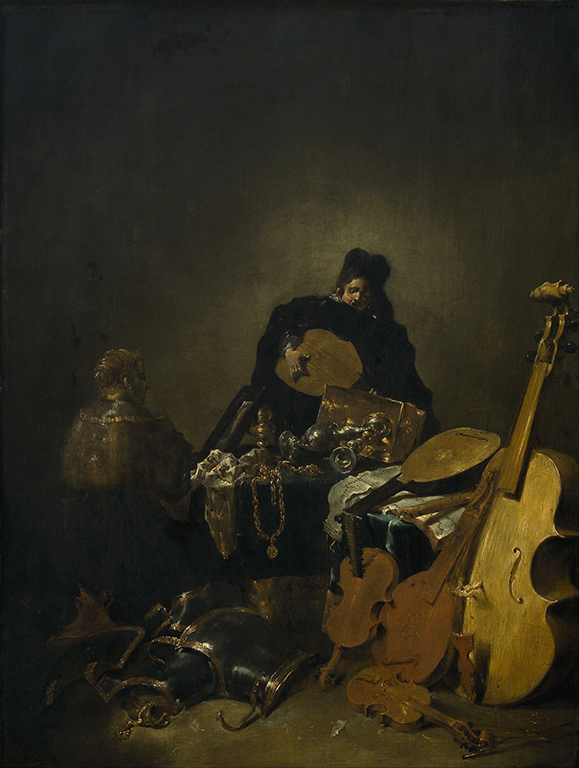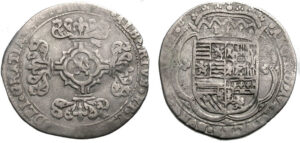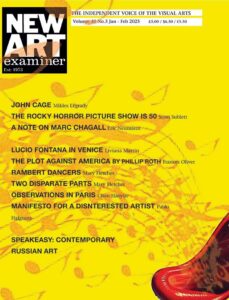
John M Montias
In Delft, as elsewhere, a young boy’s chances in life depended critically on his parent’s ability to finance his training. If you were poor, as were the wards of the Camer van Charitate, the best he can hope for, within the range of trades encompassed in the Guild of St Lucas, was to become apprenticed to a glassmaker or a furniture maker. If he survived adolescence, as many of these poor boys did not, and he was eventually admitted to the Guild as a master glassmaker or furniture maker he could perhaps see to the status of the second in the four groups listed in ascending order of economic status below. It was much more likely for him to be apprenticed to a faiencier or a stone carver and to remain a knecht all his life. To become an artist painter was not normally within his reach. Painters either stemmed from better off families who can afford the relatively high cost of training their offspring for six years, or were themselves the sons of painters.

Delft. tin-glazed earthenware
(Art Institute of Chicago)
Artists and Artisans in Delft can be divided into four broad groups of differing economic and social status, the first two consisting of registered members of the Guild and the last two non– members.
The first group includes: one) successful artists (e.g. the painters Anthony Palamedes, Leonart Bramer, and Michiel Mierevelt, the engraver Willem Jacobsz. Delff, the stone carver and architect Adriaen Willeboortsz), two) wealthy amateurs (e.g. the painters Arent van Renoy and Pieter Adriaen den Dorst, the embroiderer Willem Jorisz. Roscam), three) art dealers (e.g.Abram de Cooge and Reynier Jansz. Vermeer, the father of Johannes Vermeer), four) owners of print and bookshops (e.g. Jan Andriesz, Cloeting, Felix van Sambich de Jonge.Jam Pietersz. Walpoth), and five) owners of Delftware potteries (e.g. Heindrick Marcellis Van Gogh, Lambert hGhisbrechtsz. Kruck, Aelbrecht Keyser). This was the aristocracy of the Guild, living in houses that cost 2000 or more guilders, paying 10 to 25 guilders in taxes on the houses, and if they retain their status and to the end of their life, bequeathing 50 guilders or more to the Camer van Charitate upon their death. The value of the assets of their estates could easily exceed 15 to 20,000 guilders; however, their liabilities, especially in the case of the faienciers, were often also large, due to their heavy capital requirements. Most of the headman of the Guild were picked from this group. Their status was comparable to that of notaries, surgeons, silversmiths, and successful merchants.
The second group is made up of less successful artists in the Guild house painters, glassmakers, most sculptors and embroiderers, printers and faienciers not established on their own, and at the lower end of the scale for this group, the furniture makers. They typically lived in houses costing 800 to 1500 guilders, paid 3 to 7 guilders in taxes on their houses unless small amounts to the Camer de Charitate upon their death. The value of the movable goods in their estates was generally also in the 800 to 1500 guilders range a number of the Guild members in this group became henchmen, especially from among the glassmakers, who are guaranteed to places on the list of Hedman each year, even though the industry had substantially declined, at least in its relative importance, since the 16th century.
The third group consists of artists and Artisans who are not registered in the Guild, but by virtue of their education and training can aspire to master status. These included the sons of painters working for their father, and more generally, apprentices and journeyman who had not yet succeeded in establishing themselves but who can expect eventually to do so. (E.g. the painters, Mathys Mathisz. Spoors, who was apprenticed to Carel Frabitius and died in the explosion of the Delft powder works in 1634, Johann Cornelis van Dusseldorp, and Adriaen Arentsz. Gouda, all of whom stemmed from upper-class families). These, like almost all the members of the first two groups, were literate. Little is known about their economic circumstances because most of them lived with their master or with their family paid no taxes on their own account.

The fourth group, the overwhelming majority of whom is represented by apprentices and journeyman in the delftware industry, may be said to belong to the working proletariat of Delft. A majority of them were either totally illiterate or can only sign their names. They typically lived in little houses (huysgens) selling 450 to 300 guilders, paid 18 to 36 stuivers (20 stuivers to the guilder; an average salary for a maid was 8 stuivers a day) in taxes if they owned the house, or rented for about 50 guilders a year if they did not, and left little or nothing to the Camer when they died. Their estates rarely exceeded 500 guilders. Within this fourth group we should perhaps distinguish the long established workers of the faience industry, some of whom are presumed to have been meester knechts (Foreman) whose material conditions were at the upper end of the range for the group as a whole. But even in this subgroup few, if any, individuals ever have a chance to set themselves up as independent masters.
When the first two groups are aggregated and all Guild members are considered together, significant differences among the various trade show up in our indicators of economic status. The printers, booksellers, and art dealers, on average, seem to have lived in more expensive houses, paid higher taxes, and left larger estates than the representatives of any other trade. The painters were next, then – in descending order – the faienciers, glassmakers, and the furniture painters. The relatively low status of the glassmakers may reflect the declining fortune of their industry, which never recovered from the loss of the church’s patronage after the break of Rome.
(You may ask what relevance this had to contemporary artists apart from art history? I think it helps to show that economics has never been on the side of those who want a creative life and the difference between what you can earn and how much a home costs to buy and run has always been vast. Ed)

